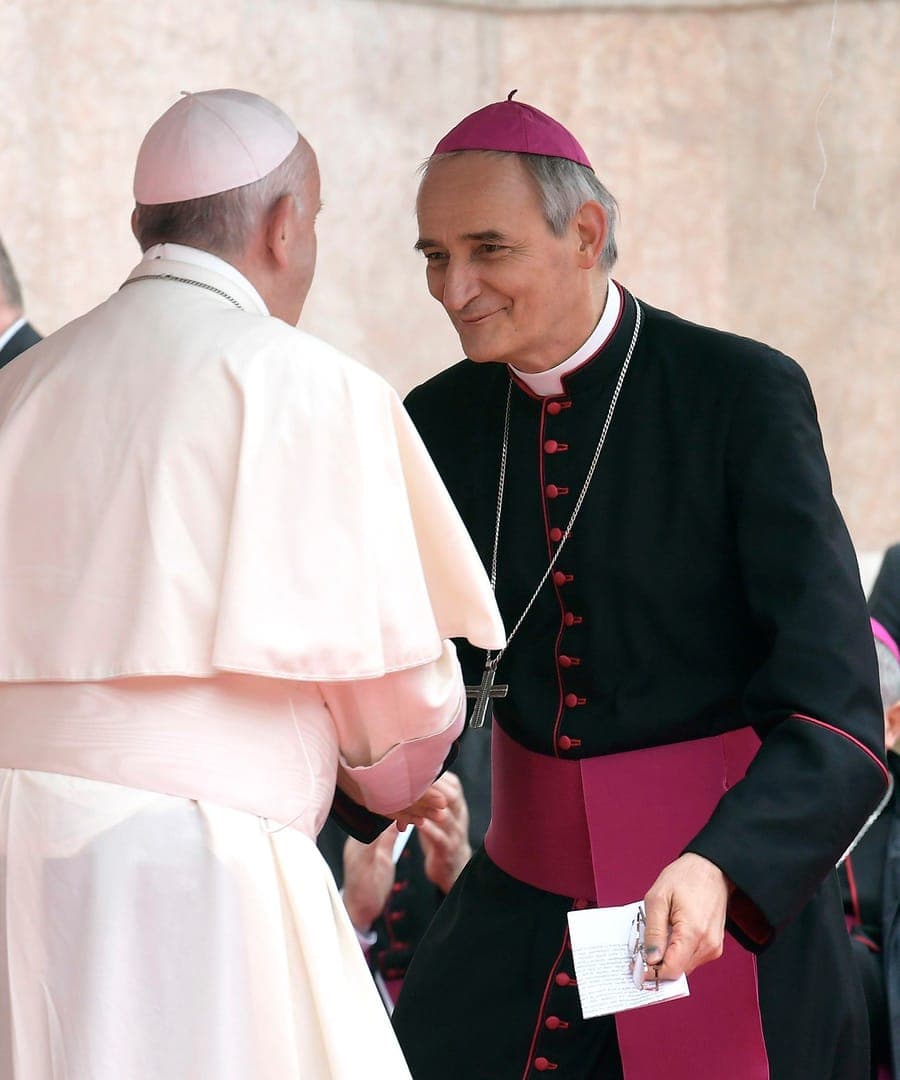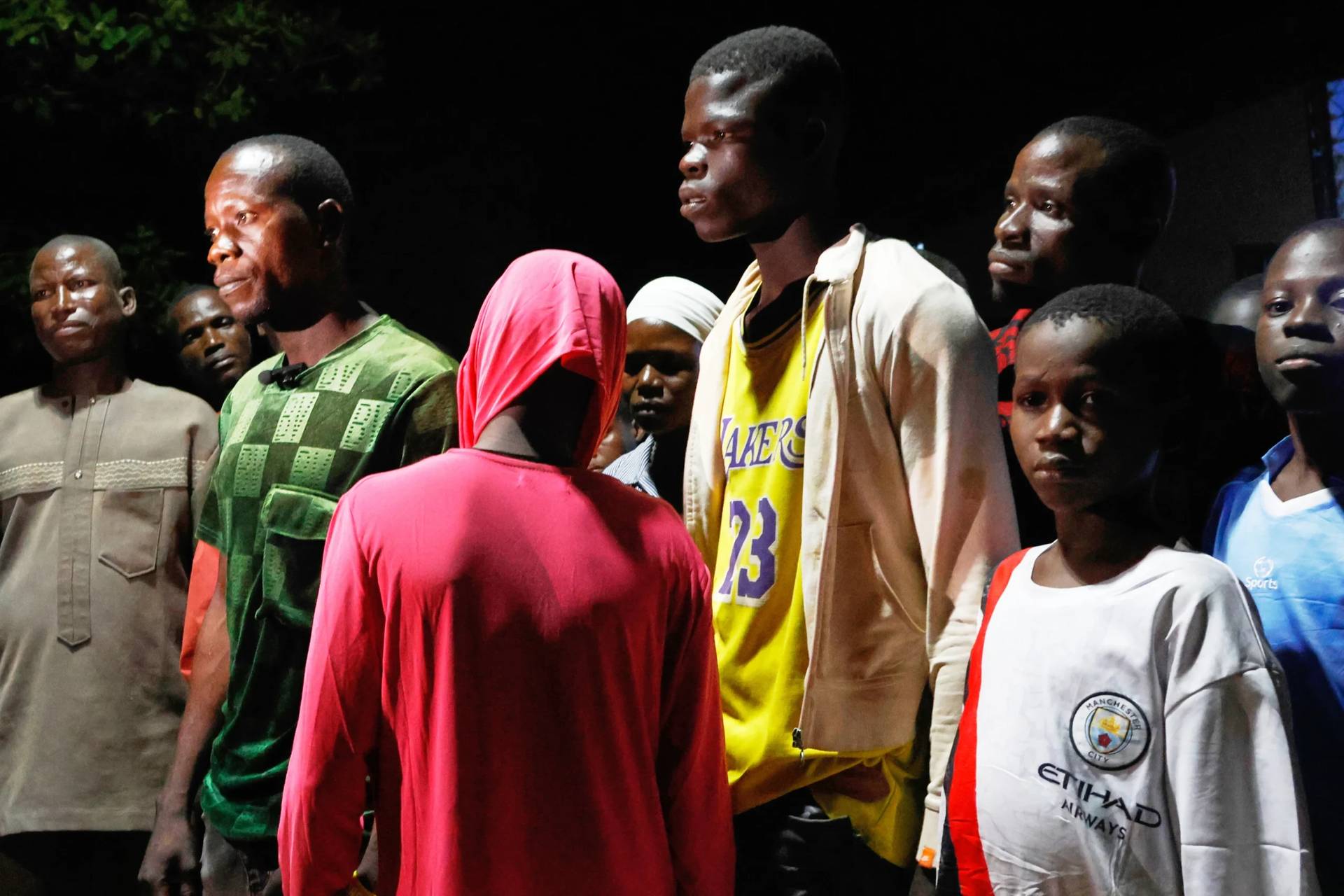ROME – When Italy recently celebrated a state funeral for David Sassoli, the President of the European Parliament who died unexpectedly from Legionnaire’s disease on Jan. 11, the Mass was held in Rome’s Basilica of St. Mary of the Angels and attended by the President of the Republic, Sergio Mattarella, Prime Minister Mario Draghi, European President Ursula von der Leyen, and virtually the continent’s entire power structure.
For such an august occasion, one might have expected the funeral Mass to be celebrated by the President of the Italian bishops’ conference, Cardinal Gualtiero Bassetti, or perhaps the pope’s Vicar of Rome, Cardinal Angelo De Donatis, or even the Vatican’s Secretary of State, Cardinal Pietro Parolin.
Instead, the main celebrant was Cardinal Matteo Zuppi of Bologna – which, for the record, wasn’t even Sassoli’s real hometown, since he was born in Florence in 1956.
Yet the funeral was, in a sense, also a celebration of Bologna and its legacy, with the lifelong friendship between Sassoli and Zuppi representing the two sides of that cultural coin, the political and the ecclesiastical.
Classically, in Italian argot Bologna is known as “Bologna rossa, dotta e grassa” – “red, learned and fat,” an homage to the city’s red brick architecture, its famed university and its equally celebrated cuisine, respectively. Yet “Bologna rossa” is also very much invoked as a reference to the city’s politics, since it’s long been a fulcrum for Italy’s progressive energies.
The future European leader and the future cardinal became friends decades ago, when they attended the same Roman high school, the “Liceo Virgilio” on the city’s Via Giulia, which was also attended by the slightly older Andrea Riccardi, founder of the Community of Sant’Egidio to which Zuppi would also later belong.
Sassoli once said of his old friend Zuppi, “He was a year older, and famous because he was in a group that worked on the city’s peripheries with the poor. [The reference was to the nascent Sant’Egidio movement.] He was thin, really thin, with an old leather bag over his shoulder, and a thick burgundy sweater instead of a coat … He was the kid with a smile, and I never saw him without a smile. Even physically, he showed real pleasure in meeting people.”
Although Zuppi and Riccardi are both Romans and Sassoli was a Tuscan, all three grew up under the shadow of Bologna because it was the center of an intellectual and cultural current in Italian Catholicism associated with the late Cardinal Giacomo Lercaro, who led the city during the years of the Second Vatican Council in the mid-1960s and was associated with a center-left, reform-oriented, social justice brand of Catholicism.
After Vatican II, Bologna also became home to the “Bologna School,” a system of interpretation of the council which emphasized the “spirit” of the council, styling the the progressive reformers as the heroes and the conservative minority at the council as the enemies of progress. Its architects were figures such as Giuseppe Dossetti, a priest and politician, and Giuseppe Alberigo, a church historian, along with Alberigo’s protégé, historian and essayist Alberto Melloni.
This was the air the young Sassoli and Zuppi breathed. Both became regular visitors to Bologna; in fact, Sassoli’s last visit to the city was in September, for an event called the “G20 of the Faiths” organized by Melloni and attended by Zuppi.
Sassoli carried the center-left, progressive and humanitarian vision of the Bologna school initially into his journalistic career, which is how he rose to fame in Italy, and then into politics. Zuppi followed the same trajectory into ecclesiastical life, becoming active in Sant’Egidio circles.
During the Pope John Paul II and Pope Benedict years, many considered the Bologna school essentially dead, surpassed by the new winds blowing under pontiffs with a different ecclesiastical and political orientation – more focused on Catholic identity than the “signs of the times,” and more congenial to the center-right than to the left.
Yet its fortunes have revived under Pope Francis, so when the pontiff sent Zuppi to Bologna in October 2015, it was widely perceived as a coronation of both the Lecaro legacy and the “Bologna school,” since Zuppi is a prominent scion of both.
At the moment, it’s considered entirely plausible that when Bassetti steps down as president of the powerful Italian bishops’ conference at the end of the May when he turns 80, the 66-year-old Zuppi could be selected as his successor. If so, it could set up Zuppi not merely to exercise greater national and international influence, but also to get some consideration as a possible successor to someone else too – i.e., Francis himself.
In the meantime, Sassoli’s political success and Zuppi’s continuing ecclesiastical rise are proof positive that in both the civil and the sacred, no movement is ever really dead – given the right circumstances, it can always stage a comeback, bigger and bolder than ever.
Follow John Allen on Twitter: @JohnLAllenJr

















